
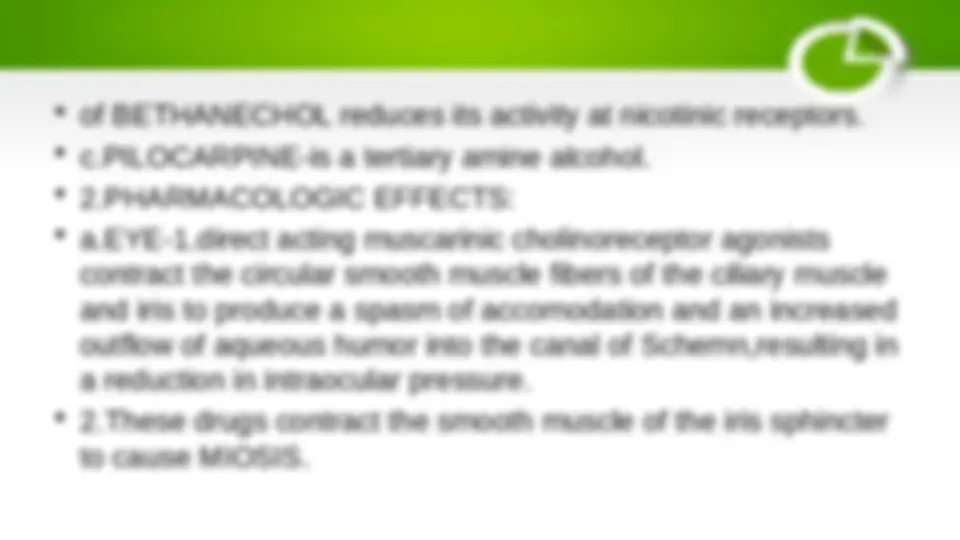
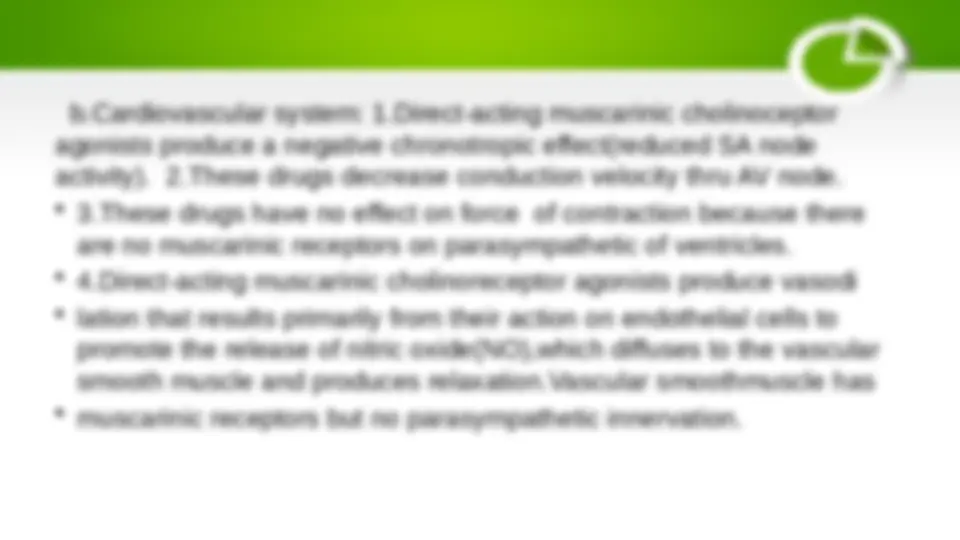
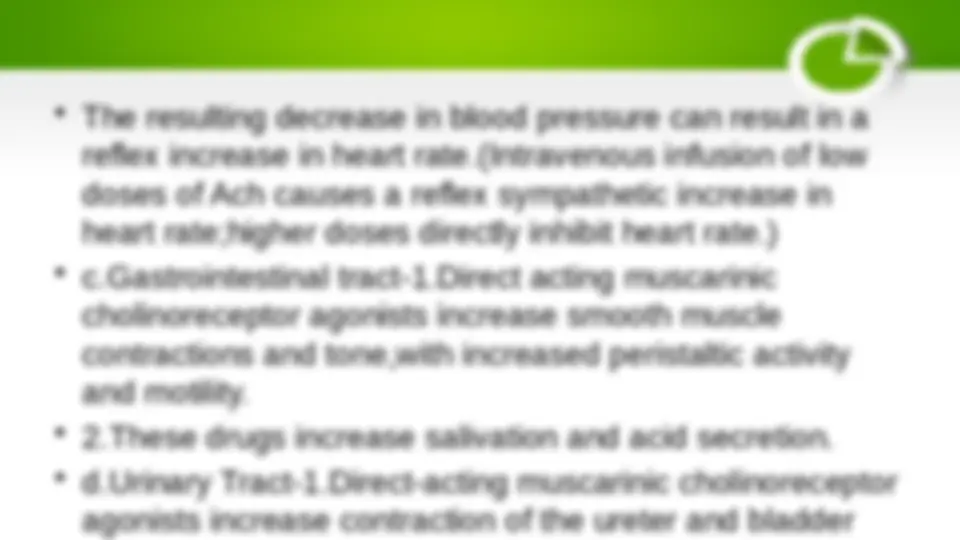
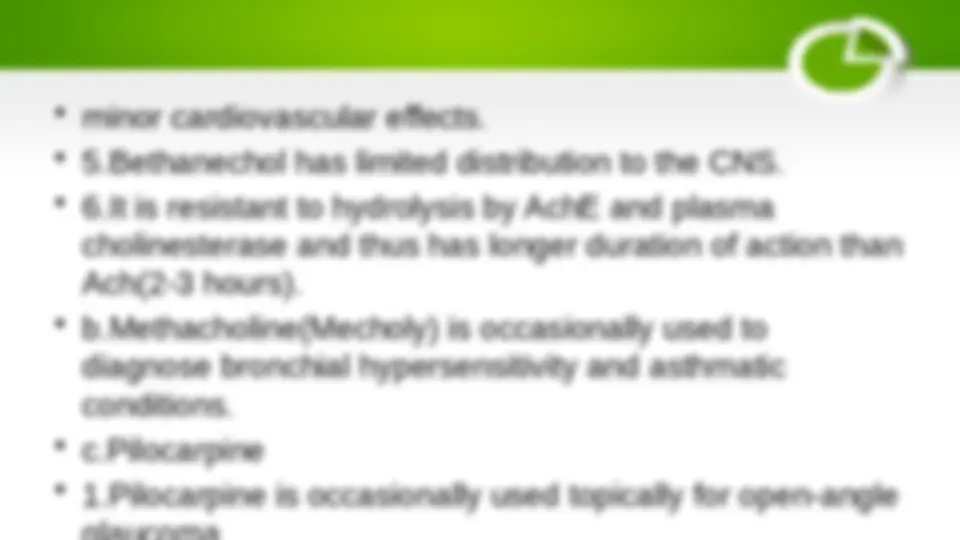
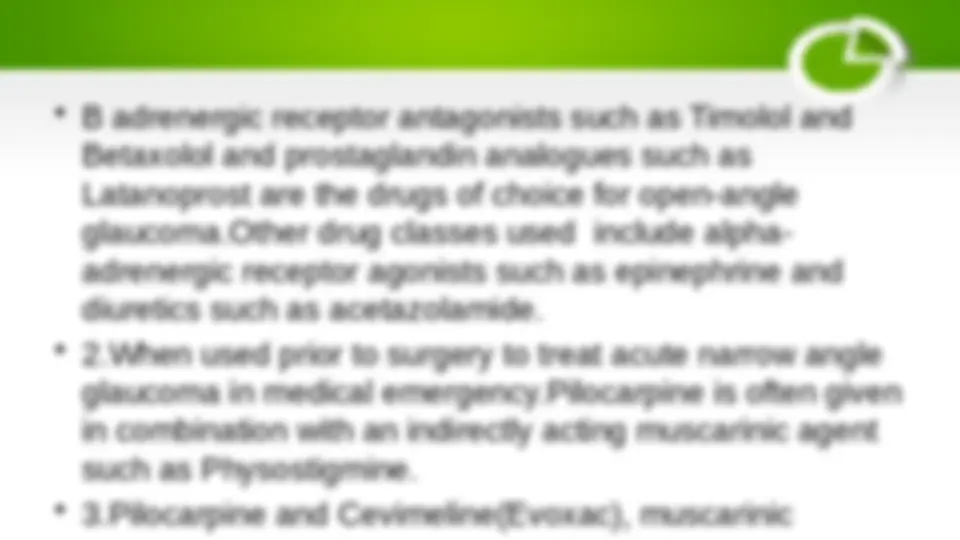
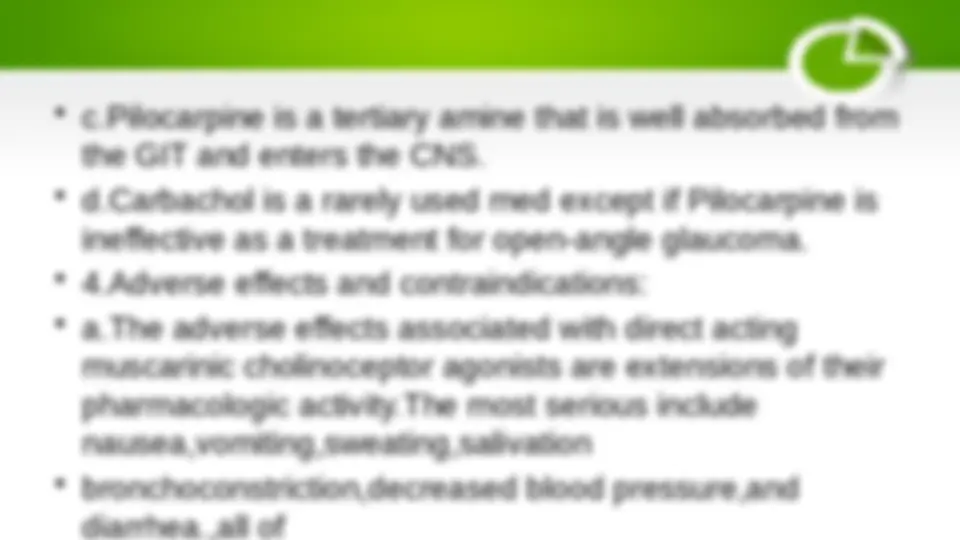
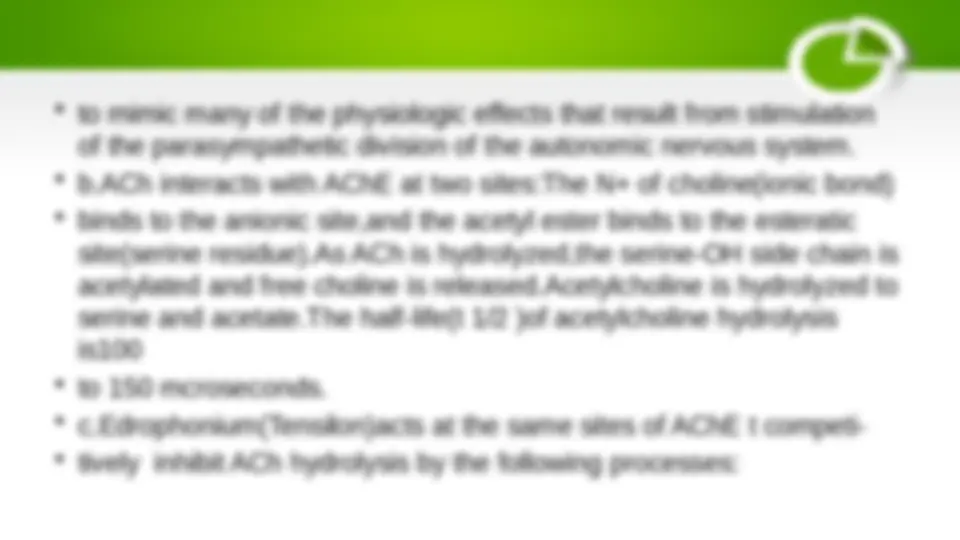
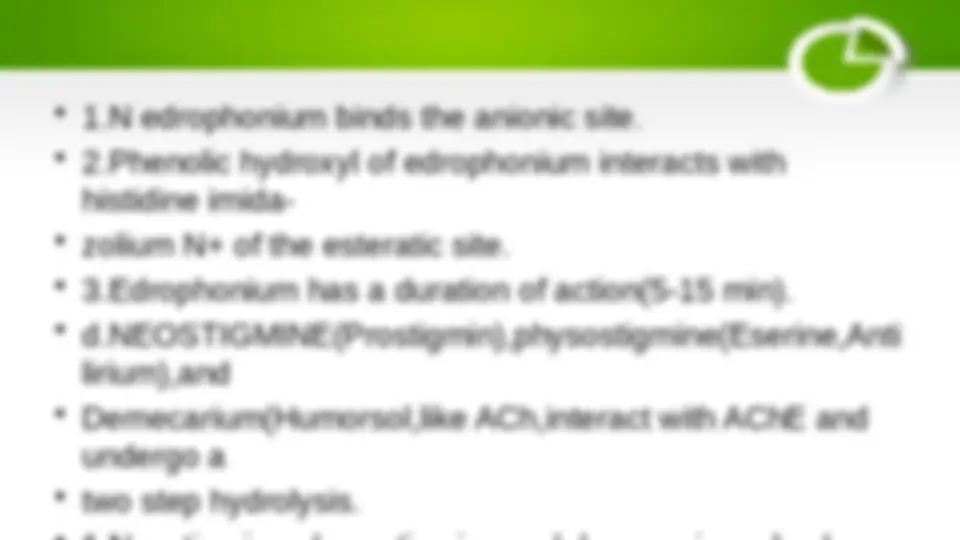
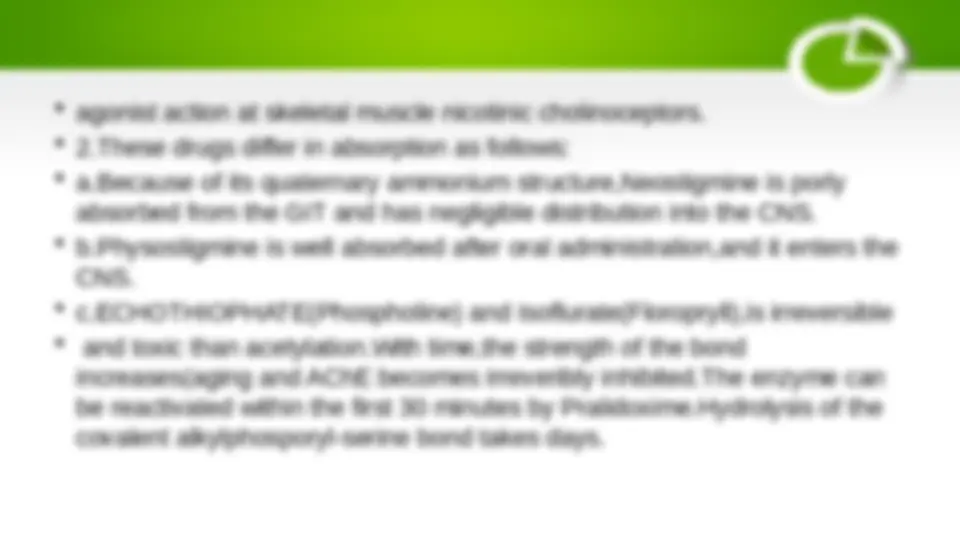
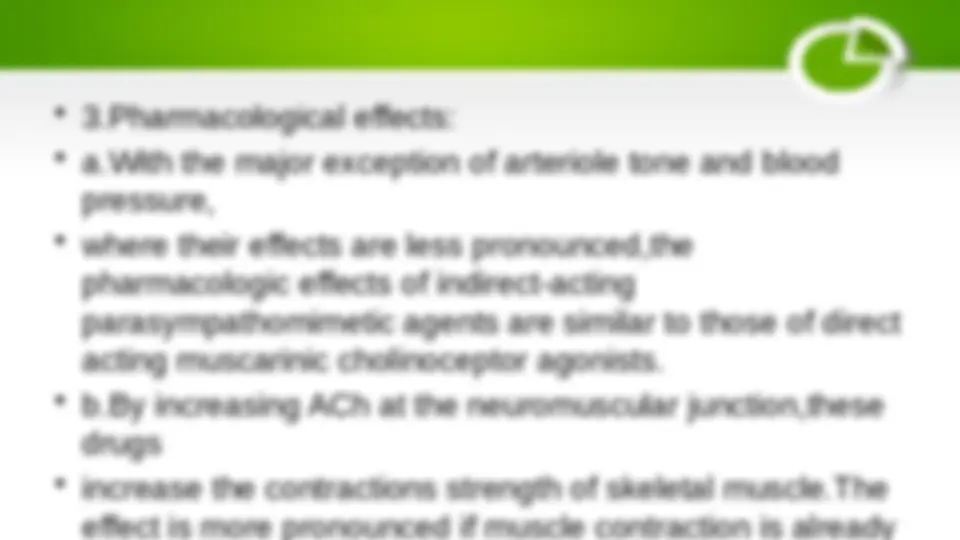
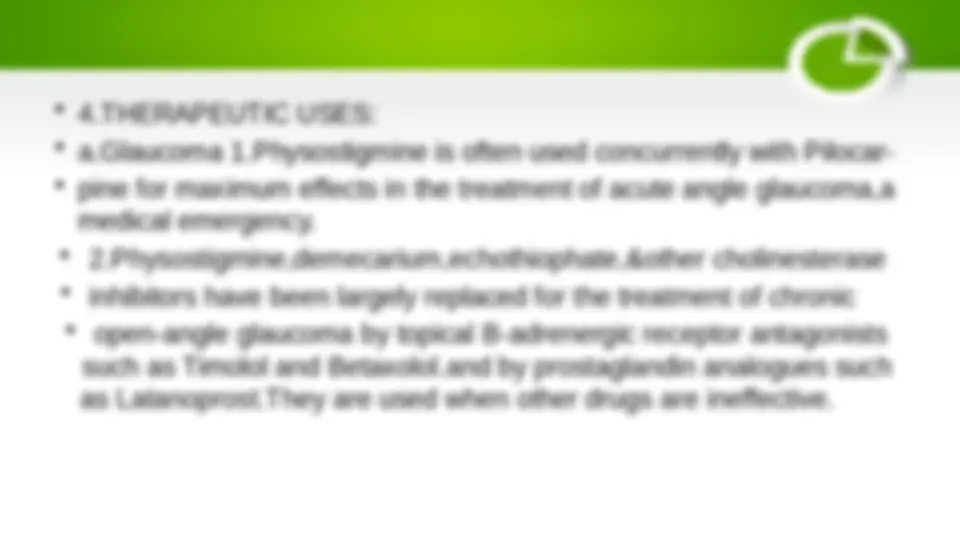
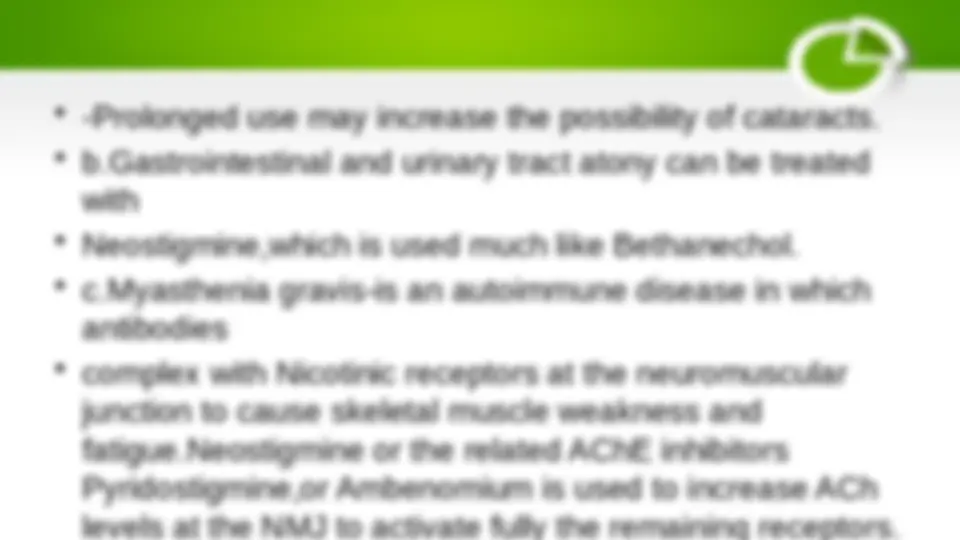
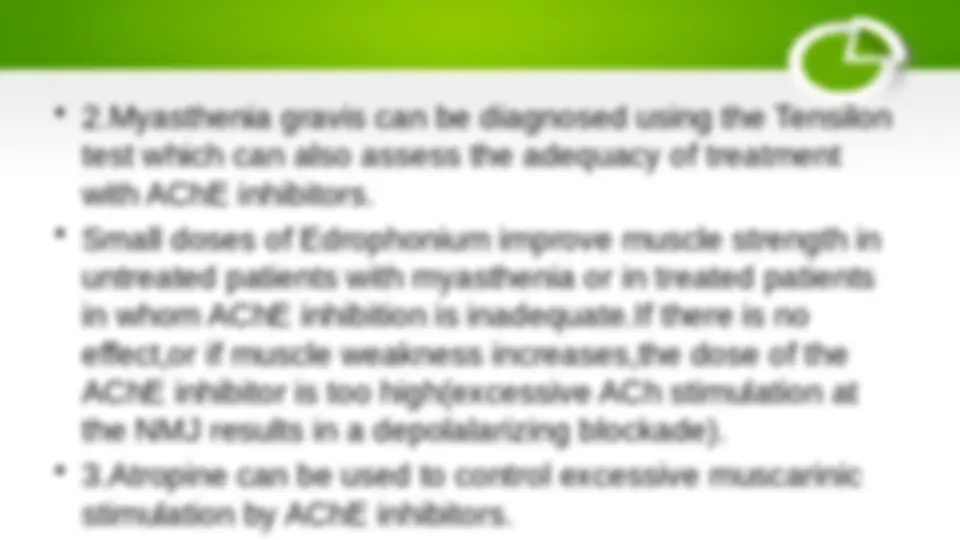

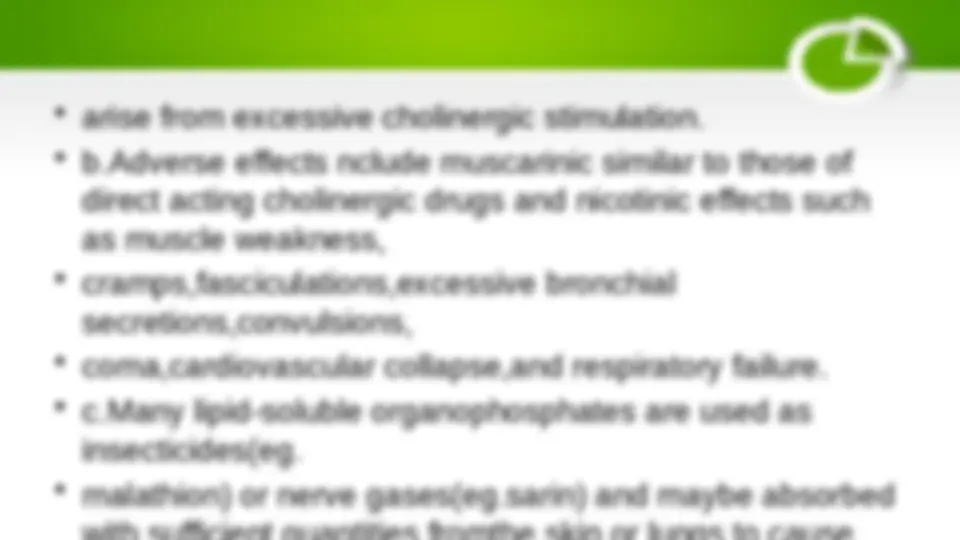
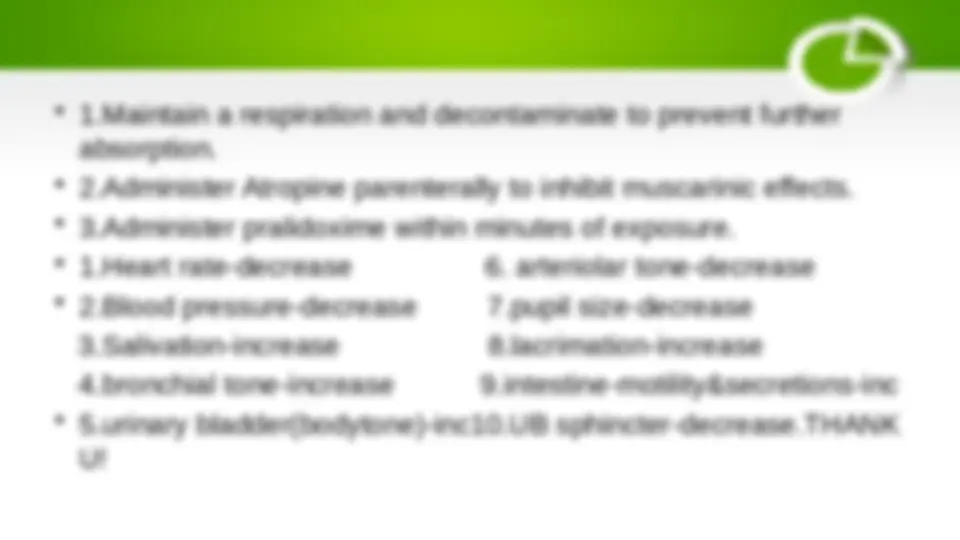


Study with the several resources on Docsity

Earn points by helping other students or get them with a premium plan


Prepare for your exams
Study with the several resources on Docsity

Earn points to download
Earn points by helping other students or get them with a premium plan
Community
Ask the community for help and clear up your study doubts
Discover the best universities in your country according to Docsity users
Free resources
Download our free guides on studying techniques, anxiety management strategies, and thesis advice from Docsity tutors
The chemical structure, mechanisms of action, therapeutic uses, and adverse effects of cholinergic agonists and indirect acting parasympathetic agents. It explains how direct-acting muscarinic cholinoreceptor agonists mimic the effects of the parasympathetic division of the autonomic nervous system, and how indirect-acting parasympathomimetic agents inhibit AChE and increase ACh levels at both muscarinic and nicotinic cholinoceptors. The document also covers the therapeutic uses of these drugs, including their use in diseases of the eye, gastrointestinal tract, neuromuscular junction, heart, and urinary tract.
Typology: Study Guides, Projects, Research
1 / 24

This page cannot be seen from the preview
Don't miss anything!

















b.Cardiovascular system: 1.Direct-acting muscarinic cholinoceptor agonists produce a negative chronotropic effect(reduced SA node activity). 2.These drugs decrease conduction velocity thru AV node.